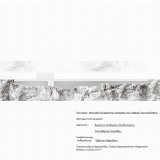Isthmus of Corinth is a landmark in Greek area since the ancient era. It’s drilling occupied engineers since the classical period to the late 19th century. All the attempts for its drilling during the ancient times failed due to the lack of know-how. Finally, during the 19th century the marine connection of the two gulfs is managed through an astonishing for the time process, in which worldwide fame engineers contributed. The connection of Corinthian and Saronic Gulf through the ancient Diolkos changed the maritime facts replacing the sailing of the whole Peloponnese. As a result, the drilling of Isthmus constitutes a landmark for the area, detour for the commercial ships and a touristic attraction for the passengers.
Nowadays the land connection of Main Greece and Peloponnese is managed through two national roads, railways and pedestrian bridge that unify the gap created by Isthmus. Moreover, at both ends of Isthmus the connection is managed through emerging bridges for vehicles and pedestrians.
Due to the constant transit of vehicles, the area contains many buildings that serve the stopped drivers. In addition a long-distance bus stop exists besides the old national road in which busses stop constantly. These stops have also a touristic function as they sell souvenirs of Isthmus and ancient Diolkos. The cultural value of the area and the landmark of Isthmus gave a boost for touristic developments. Though, the distance from the city centers did not help any attempt. Thus, many hotel and commercial plans were abandoned and even constructions were left half-finished.
In addition, the fast passage through the national roads and the railways does not allow the view of Isthmus for more than a few seconds from the inside of the vehicle. The pedestrian bridge is distanced far enough from the stops and thus the only opportunity for viewing Isthmus is given from atop the old national road, underneath of which extreme sports activities take place. The longitudinal walk of Isthmus along the slopes is partially managed through dirt roads.
Moreover the extant parts of the ancient Diolkos are left unprotected and shelterless, without any highlighting for the visitors, while the museum that was created for the specific monument is in distance and downgrades it even more.
Thus, the need for touristic highlight, the demands for protecting the cultural stuff that concerns the monuments of Isthmus and Diolkos, the need for sheltering the stopped bus passengers and the vehicle passengers and the lack of cultural centers at the vicinity of Posidonia and Isthmia led to the elaboration of the project “At the limit- Museum of modern history of Istmus of Corinth” to satisfy all the above conditions.
Inspired by the particular topography of the area and the human interference that serve the maritime and land transport, the students concluded in a structure of cultural character, transforming according to the type of the use that it temporarily shelters, changing its form to adapt the weather conditions and the needs of the users and finally being alive through the whole year term.
